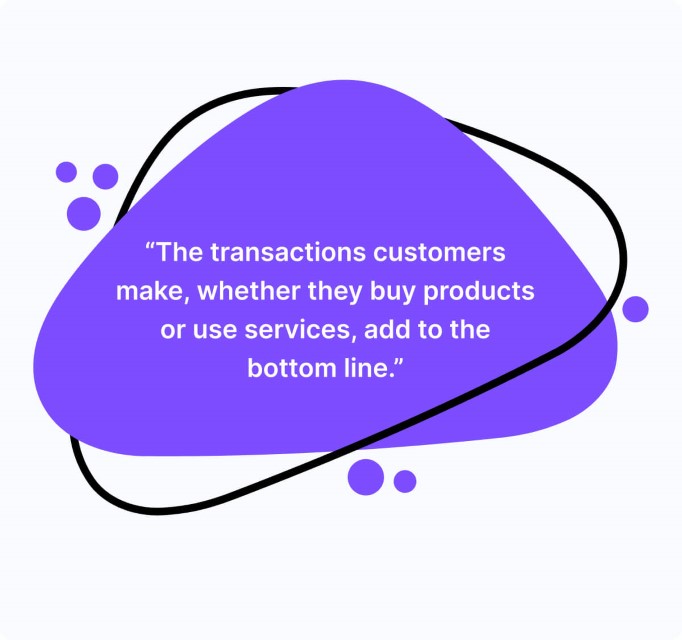Are Customers Stakeholders? Why and How?
- November 21, 2023
- 13 mins read
- Listen

Table of Content
What comes to mind first when you hear a mention of the term “stakeholders?” Such a mention almost always brings images of shareholders and employees to mind. This happens to most of us as we rarely think beyond the obvious.
Yes, we forget customers whenever there is a talk around stakeholders. We unintentionally do this because we are not aware of how customers are a pivotal group whose significance and influence are nothing less than stakeholders.
This brings us to the next question – are customers stakeholders?
This question needs a deeper exploration into the changing relationship between businesses and all the stakeholders they serve. After all, customers are as integral as anyone else because they are not only consumers of products and services but also key stakeholders in the growth and success of any enterprise.
So, in this blog, we will dig deeper and understand the customer stakeholder facet in detail, and will also shed light on how customers play a vital role as stakeholders and more.
But, before going further, let’s get started first with understanding what a stakeholder is…
What is a Stakeholder?
A stakeholder is any individual, group, or entity that has an interest in a company. A stakeholder can impact the decisions or outcomes of an organization or can be impacted by the operations and actions of the said organization. Stakeholders often have a vested interest in the growth, success, and performance of the enterprise.

For a business, it’s important to understand and manage the needs and concerns of its stakeholders to achieve sustainable success in the market and stay true to the standards of ethics and operations. Each stakeholder can influence the overall reputation of an organization and that’s why considering their needs is key to organizational governance.
Types of Stakeholders
There are two primary categories of stakeholders –

- Internal Stakeholders – They refer to the individuals or groups within the organization who have a direct impact on the day-to-day operations, or who are directly impacted by the actions and decisions of the organization. Employees, shareholders, management, owners, and the board of directors are part of the internal stakeholders.
- External Stakeholders – They refer to the individuals or groups outside the organization yet with an interest in the success and activities. Customers belong to this category of stakeholders as they purchase goods and services and therefore can have a big impact on the organization. Suppliers, lenders, investors, NGOs, and interest groups belong to the external stakeholders.
What is a Customer Stakeholder?
A customer stakeholder is an individual, group, or entity that interacts with a business as a customer and has a direct impact on the growth and success of the organization. The interactions, purchasing decisions, and feedback from customer stakeholders have a direct impact on that business. After all, they hold a significant stake in the products, services, and outcomes of the business.
Customer stakeholders play a pivotal role in many ways, including –
- They influence an organization’s strategies, marketing, and direction.
- Their regular engagement is critical for the survival and growth of the business.
- The satisfaction and loyalty of customer stakeholders have a huge influence on the overall reputation of the organization.

Different types of customer stakeholders exist, including –
- Individual consumers – This group refers to people who buy goods or services directly from a company.
- Corporate clients – This group refers to companies that buy ( procure ) products or services from another company.
- Retailers – This group refers to entities that act as intermediaries between buyers and the company it resells or distributes for.
- Subscribers – This group refers to an entity that subscribes to a service, solution, or membership program.
- Investors – This group refers to investors or shareholders who understand the value and need of customer satisfaction.
Customers as Stakeholders
Customers are always stakeholders in any organization. They command a key position due to their direct impact on the overall success of an enterprise. Without their trust and loyalty, a business might not be able to grow beyond a point, therefore putting its sustainability in jeopardy.
Discussed below are some key points that suggest why customers should be considered as stakeholders –
Customers’ purchasing decisions impact the bottom line of a company
Where would a company be if it did not have customers, or if it did not have people buying from it? If it were not for customers, no company would exist, let alone thrive and make some profit.

After all, whatever revenue and profit a company earns is not possible without customers’ purchasing decisions. The transactions customers make, whether they buy products or use services, add to the bottom line.
Customers’ feedback shapes business strategies
Customers are always at the core of all big decisions made by a company. Be it product development or service improvements, every major decision gets direction due to the feedback provided by customers. That’s why most businesses focus a lot on collecting feedback through reviews, surveys, and other ways. Without customer feedback, how can a business take corrective measures?
Customers’ changing needs decide the contours of the market
Have you ever thought about why some businesses achieve incredible success while others falter and gradually sink to extinction? Well, much of this has to do with the way companies understand and then adapt to the changing needs and preferences of customers. Those who do adapt keep pace with the trends and stay relevant while others lose track and fall off into obscurity.
Customers’ loyalty and satisfaction make brands out of companies
Happy customers are always good for the business. They not only spend more but bring more customers as well. Such is the value of customer happiness that many top companies regularly invest in customer service and loyalty programs. Some offer personalized experiences to win the trust of customers. The ones that go out of the way to make customers happy end up becoming a brand. This shows how customers are key stakeholders when it comes to deciding the fate of a business.
Customers’ experiences decide the reputation of a company
For customers, experience matters more than anything else. If a company provides them with great experiences at each stage of the journey and serves them well across touchpoints, it makes them positive about it.

Giving such experiences works wonders in the favor of the company as it’s then trusted by more customers, adding to its overall reputation in the market. After all, 86% of customers will pay more if the level of service is great.
Stakeholder vs Customers – How are they Different?
We know how customers and stakeholders are two distinct groups that are key to businesses in many ways and on many levels. We also know how both have different roles and interests and how businesses need to understand and manage relationships with both to achieve – and maintain – their success and sustainability.
Here are the many differences between stakeholders and customers –
1. Both have different roles to play
We are aware of how customers represent the individuals, groups, or entities that buy goods or services from a business and have a vital role in ensuring revenue for the business. They engage in transactions, interact with the business, and consume or use the products or services. All the roles they play can have a big impact on the growth of an enterprise.
On the other hand, stakeholders represent the groups, entities, or individuals who have an interest in the operations of a business. They may or may not purchase but have significant interests in the performance and sustainability of the organization. Their impact is huge in the way a business maintains its reputation in the market and fulfills its social responsibility.
2. Their interest and motivation vary greatly
Why do customers buy something? Well, they have needs and desires, and the products and services they purchase fulfill those needs and desires. So, this explains why customers are largely motivated by their needs and their primary interest lies in extracting value from the purchase. They look to get quality, good experiences, and utility from the items they purchase. If they get what they need, they feel happy and buy more often. It adds to the profit of the company they buy from.
On the other hand, stakeholders tend to have diverse and broader interests as some might be motivated by financial gains whereas others may be driven by the desire to contribute to the sustainable growth of the organization. For example, shareholders are largely motivated by financial returns while employees may feel more concerned about the kind of social impact and ethical obligations of the organization.

3. Both enjoy different kinds of relationships with the business
Customers do have a transactional relationship with the business. Their only goal is to do direct transactions, buy goods or services, and get value for their money. Beyond that, their ambit ceases but the kind of relationship they have with the business lays the foundation of success or lack of it.
Unlike customers, stakeholders are diverse entities or groups with varying levels of relationships with the business. For example, employees mostly have a professional-level interest, shareholders have a monetary interest, and suppliers enjoy a partnership interest.
4. Their collective influence decides the fate of the business
Every business strives to keep its customers happy and satisfied. Why? Because such customers have a great impact on sales, growth, and reputation. If customers are not happy, they won’t make repeat purchases, share negative feedback, post disparaging reviews, and show disloyalty. Needless to say, customers’ influence is colossal and it often decides the fortune of the business.
Similarly, stakeholders also have a big influence on the business, although on strategic levels. They can impact company policies, operations, and practices. Quite like customers, their impact can affect the business on many levels. If a business does not enjoy good relationships with stakeholders, it might adversely impact its public perception, therefore causing doubts over the long-term sustainability of the business.
5. Both are bound by engagement of a diverse nature
Have you ever wondered why businesses employ a range of marketing and sales tactics? Or why do they put in place customer service and support channels? Well, these steps are meant to engage with customers on many levels, communicate with them and ultimately convert, or retain them. The primary reason why a business uses communication is to give product information to customers, promote their products or services, resolve issues, and boost the overall customer experience.
On the other hand, a business’s obligations to stakeholders may feel different but they remain the same when it comes to engagement. For stakeholders, it’s important to know about the financial performance of the business, its social impact, and the environmental practices employed. That’s why companies regularly conduct shareholder meetings, share financial reports, and do community outreach programs to communicate with stakeholders and keep them in the loop.
How Are Customers Stakeholders – 4 Examples from the Industry?
Customers have a vested interest in the overall success of the business. Since they purchase products or services, they directly affect the direction of the business, and sometimes get affected by that.
Here are some of the examples from the industry that show how customers are stakeholders –
1. Amazon’s success is tied to customers’ purchasing behavior
Amazon is the leading global e-commerce company whose financial success is directly linked to the buying behavior and preferences of its customers. Its main source of revenue is generated from the sales of its products on its platform. More so, the company regularly analyzes customer data to personalize recommendations and improve the shopping experience.
Similarly, Amazon invests heavily in different programs to attract new customers and retain new ones. The more customers buy from it, the more it sees growth in profits and revenue. All this suggests how customers’ purchasing behavior and decisions ultimately impact the company’s financial bottom line.
2. Apple’s product development is significantly influenced by customer feedback
Apple is known for quality products and it’s been leading the smartphone industry since 2007. One main reason behind its overwhelming success is the numerous iterations and development of its products. More so, the company has continuously improved its iPhone based on customer feedback and inputs.
Each new version of the iPhone is marked by features either suggested or desired by users. More so, the company ensures its products always align with market trends and tech advancements. The best part, Apple regularly collects users’ data through surveys and monitors user behavior to identify user pain points and preferences.
3. Netflix relies on customer data to shape its business strategy
Netflix is a streaming service popular for delighting users with a wide array of content, including movies and programs. For a long time, it has stayed ahead of other players in the industry for its strategy to continuously collect and analyze data on viewership and understand the changing trends in content formats.
Netflix not only identifies trends and viewing habits of its users but also analyzes shows and genres according to their popularity with the audience. All this helps it make decisions about producing content or acquiring licensing rights for shows and movies. More so, they use algorithms based on user viewing history to offer personalized recommendations.
4. Patagonia’s commitment to environmental sustainability is driven by customer concerns
Patagonia is a well-established outdoor apparel company whose practices are largely driven by customer concerns about environmental impact and ethical practices. The company now has a policy of keeping waste in production as low as possible, using recycled materials, and taking steps for environmental activism. The company also adopts transparency in its supply chain and adopts fair labor practices.
More so, Patagonia’s steps have influenced the industry as now most players in the industry set high standards for sustainability and ethical practices. This shows how customer concerns about ethical practices can force businesses to adopt responsible measures.
Final Thoughts
Customers have always been stakeholders in a business as they have both direct and indirect impacts on the overall success and sustainability of an organization. From financial impact to strategy considerations, customers influence virtually every facet of an enterprise.
We, at REVE Chat, understand how customers have a huge role to play in deciding the direction and shape of a company. We also understand how the way a business engages with its customers can achieve more than others.
So, we have a range of customer engagement tools that a business can use and engage with its customers better. You can sign up and see how our tools can add value to your business’s customer relations.
Frequently Asked Questions
A stakeholder is any individual, group, or entity with an interest in a company, impacting or being impacted by its decisions and operations.
Yes, customers are stakeholders as their purchasing decisions, feedback, and loyalty directly influence a company’s revenue, strategies, and reputation.
Customers have a transactional role focused on buying goods or services, while stakeholders like employees or shareholders have broader interests, such as operational or financial impacts.
They drive revenue through purchases, shape strategies with feedback, influence market trends, boost brand reputation, and enhance loyalty, critical for business success.
Amazon’s profits tie to customer buying, Apple refines products via feedback, Netflix tailors content with viewing data, and Patagonia adopts sustainability due to customer concerns.



